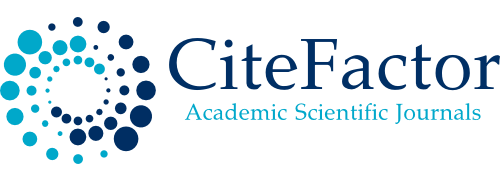The effectiveness of special endurance exercises on diminishing the angular kinetic energy of body parts when re-performing front and back shots in squash
DOI:
https://doi.org/10.61841/zg1w6661Keywords:
kinetic energy, EMG device, squashAbstract
Squash is considered one of the games that require great physical effort through the continuous movement speed that the squash player needs while he moves to perform the front and back shots. The problem of research lies in a previous study on the use of an EMG device for working muscles when performing the front and back shots. During the previous study, the researcher recommended the use of special endurance exercises to develop players as a result of a decrease in the value of the electrical signal when the player performs large repetitions during play. The two researchers believe that this weakness in the player's own endurance abilities (endurance of speed and strength) led to that decline and directed this study to knowing the effect of special endurance exercises on decreasing the angular kinetic energy of body parts when re-performing the front and back shots of the youth national squash team. The most important objectives of the research are to identify the effect of the decrease in the angular kinetic energy of some parts of the body and its reflection on the speed of performing back and front straight shots in squash. The researchers concluded that special endurance exercises led to a delay in the decrease in the angular kinetic energy of body parts when repeated front and back strokes in squash.
Downloads
References
1. Abu Al-Ula Abdel Fattah. Sports Training, Physiological Foundations (Cairo: Dar Al Fikr Al Arabi, 1997).
2. Ahmed Nasreddin Syed, Principles of Sports Physiology: 2nd Edition (Cairo, Al-Kitab Center for Publishing, 2014).
3. Ikhlas Abdul Hafeez and Mustafa Hussain Bahi. Methods of scientific research and statistical analysis in the educational, psychological, and mathematical fields, Cairo: Al-Kitab Center for Publishing, 2000.
4. Hamdan Rahim Raja. The effect of special endurance on the performance of some throwing grips (jerk), PhD thesis, University of Baghdad, College of Physical Education, 1994.
5. Hamdi Ahmed Al-Sayed: Muscular Strength and Working Muscles Exercises, 1st Edition, Al-Kitab Center for Publishing, Cairo, 2011.
6. Risan Khuraibet Majeed, Research Methods in Physical Education, Mosul: Directorate of Dar Al Kutub for Printing and Publishing, 1988.
7. Sareeh Abdul Karim and Wehbi Alwan Al-Bayati: Anatomical Analysis and Its Kinetic and Mechanical Applications, 1st Edition, Baghdad, Uday Al-Aqili Press, 2007.
8. Sarih Abdul Karim: Biomechanical Applications in Sports Training and Kinetic Performance, 2nd Edition, Baghdad, 2010.
9. Sarih Abd al-Karim, Wehbe Alwan: Biomechanics, Bio-Mathematical, 1st Edition (Al-Ghadeer Printing Company, Beirut, Lebanon, 2012).
10. Tariq Desoufi Kamel: A proposed program for developing the special physical requirements of squash players and its impact on the level of performance, MA Thesis, Helwan University, College of Physical Education, 2000.
11. Tariq Desouky: A proposed program for developing the special physical requirements of squash players and its effect on the level of performance, MA Thesis, Helwan University, 2001.
12. Talha Hussam El-Din and others. The Scientific Encyclopedia of Sports Training, 1st Edition (Cairo: The Book Center for Publishing, 1997).
13. Abd Ali Nassif and Qassem Hassan Hussein (previous source), 1979.
14. Ali Jihad Ramadan: The Impact of a Suggested Training Curriculum on Developing Some Basic Skills in the Game of Squash, Master Thesis, College of Physical Education - University of Baghdad, 2000.
15. Qasim Hassan Hussein and Abd Ali Nassif. Science of Sports Training, 1st Edition (Mosul: Dar Al-Kutub Foundation for Printing and Publishing, 1990).
16. Qasim Hassan Hussein, Short-distance field training (Baghdad, Al-Adeeb Press, 1987).
17. Mufti Ibrahim. Modern Sports Training, 1st Edition (Cairo: Arab Thought House, 1998).
18. Wajih Mahjoub. The origins of scientific research and its methods. 1st Edition, Jordan: House of Curricula, 2001.
18. Rander A., Sherman J., and Luciane D.; Muscle Inhuman Physiology: The Mechanisms of Body Function, Chapter 11, 7th ed., Imc. Crow Hill, 1998.
Downloads
Published
Issue
Section
License
Copyright (c) 2020 AUTHOR

This work is licensed under a Creative Commons Attribution 4.0 International License.
You are free to:
- Share — copy and redistribute the material in any medium or format for any purpose, even commercially.
- Adapt — remix, transform, and build upon the material for any purpose, even commercially.
- The licensor cannot revoke these freedoms as long as you follow the license terms.
Under the following terms:
- Attribution — You must give appropriate credit , provide a link to the license, and indicate if changes were made . You may do so in any reasonable manner, but not in any way that suggests the licensor endorses you or your use.
- No additional restrictions — You may not apply legal terms or technological measures that legally restrict others from doing anything the license permits.
Notices:
You do not have to comply with the license for elements of the material in the public domain or where your use is permitted by an applicable exception or limitation .
No warranties are given. The license may not give you all of the permissions necessary for your intended use. For example, other rights such as publicity, privacy, or moral rights may limit how you use the material.









